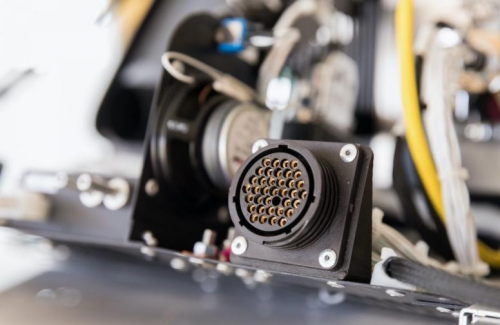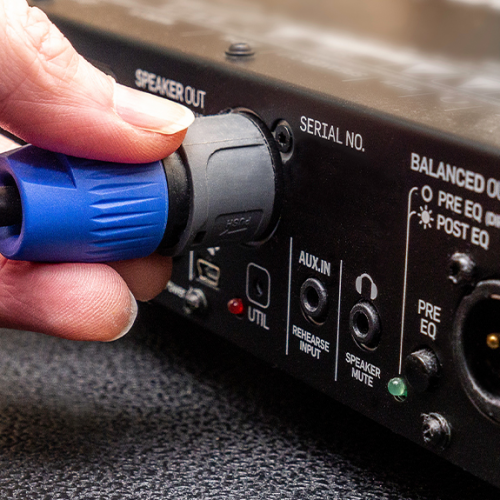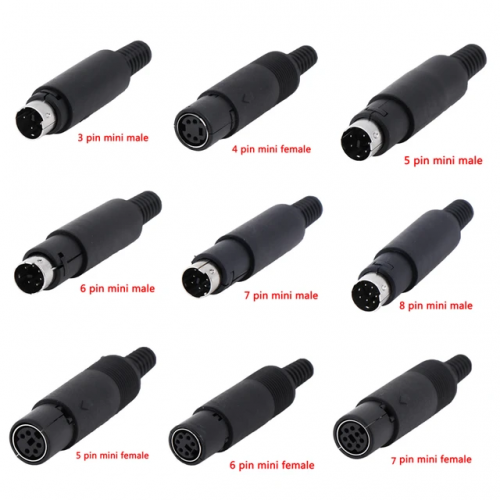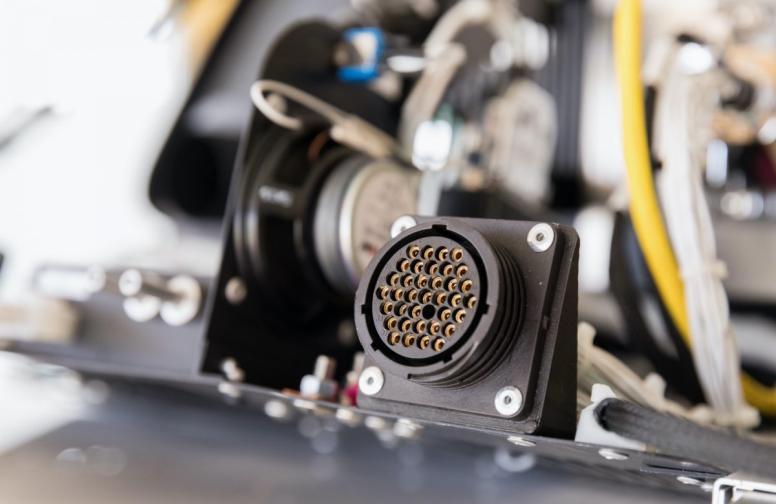The term ‘DIN connectors’ refers to a wide range of connectors that comply with the standards set by the Deutsches Institut für Normung (DIN). The DIN standard for electronic connectors covers design, dimensions, material and performance requirements.
The DIN connector was first introduced into production lines in the 1970s. It is an electrical connector that is constructed with multiple pins under a protective circular sheath.
Typically, full-size DIN connectors contain between 3 and 14 pins with a diameter of 13.2 mm. DIN connectors come in a variety of sizes, pin configurations, and types for a variety of markets and applications, including audio, video, data, power, and signal transmission. Common DIN connectors include DIN41612, circular DIN, mini-DIN, and various other configurations with different pin counts.
DIN was founded in 1917 during the First World War to standardise manufacturing processes and materials in order to improve the efficiency and interoperability of products.
DIN represents German interests in international organisations such as the European standards body CEN and the international standards organisation ISO. many German connector companies are involved in the DIN standardisation process. However, the influence of DIN standards extends beyond Germany. Many DIN standards have been adopted as international standards, and adherence to DIN standards improves market access and competitiveness for companies operating globally.
I. Common DIN connector products
1.Circular connector
Circular connectors consist of a set of male plugs. They have the same characteristics, 13.2 diameter metal shield with notches to limit the direction of the notch, where the plug and socket can be connected.


2.Speaker Connector
Speaker connectors are electrical connectors. They connect speakers and audio power amplifiers.

In a speaker connector, the terminals are paired so that the two wires of the speaker cable are connected to one terminal. As speaker cables are polarised, they are usually colour coded. Therefore, round pins connect the positive (red) and negative (black) wires. Three-hole female connectors are the most common and have a round hole on either side of the spade hole. One has auxiliary contacts and one does not. It provides the option of connecting the internal speaker by inserting a plug that rotates the internal speaker 180 inches.

It is usually older equipment that uses it, such as 16mm film projectors. Becker radios in Mercedes, LED lights and halogen lights connected to a power bulb also have this. This speaker connector is also available in three and four pin versions, such as used by Bang and Olsen.
3.Din and mini-Din connectors
Mini-DIN connectors are, as the name suggests, smaller in size than regular DIN connectors. They are still circular, but the pins are arranged in horizontal rows instead of a circular pattern. Mini-DIN connectors are used for S-video connections, PS/2 mice and keyboards, and a number of other applications. Both DIN and mini-DIN connectors are secured in place by friction from the connector body and the pins are held in place.
6pin (also known as PS/2 connector), PS/2 connector is mostly used for keyboards and mice but has slowly been replaced by USB. 4pin (usually used as S-Video connector).

II. Standardisation
International standards such as DIN provide a common language for the technical world and support efficiency and quality assurance in industry, technology, science and the public sector.
DIN standards for electronic connectors cover design, dimensions, materials, quality and performance requirements. New DIN standards are constantly being introduced and existing standards may be revised or extended over time.
DIN standards define the dimensions, materials, mounting hole spacing and other characteristics of DIN connectors to ensure compatibility and interchangeability between components from different manufacturers.DIN connectors are widely used in industrial, commercial and residential electrical equipment around the world due to their standardised design and ease of installation.
III. Markets
DIN standards cover a wide range of fields, including engineering, technology, manufacturing, healthcare and more. By establishing common benchmarks and norms, DIN standards facilitate trade, innovation and international co-operation. KONNRA Connectors provides customers with well-designed, rigorously manufactured DIN standard connectors designed to meet the needs of a wide variety of industries. Our products. Whether in industrial automation, communication equipment, or medical electronics, KONNRA connectors help customers achieve more stable and efficient connections with excellent performance and reliability. At the same time, we adhere to the customer-centric, personalised service and technical support to ensure that every customer can enjoy a quality product experience. KONNRA connectors are your reliable choice.










